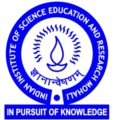CSIR NET - Physical Science Answer key for SET - A (Comment your suggestions)
PART - A
1. 3
2. 4
3. 4
4. 4
6. 1
8. 3
9. 3
11. 4
12. 2
13. 2
15. 2
16. 3
18. 3
19. 2
20. 1
PART - B
21. 1
22. 4
23. 2
24. 2
25. 1
26. 4
27. 4
28. 2
29. 3
30.
31. 1
32. 1
33. 3
34. 2
35. 4
36. 4
37. 4
38.
39. 2
40. 4
41.
42.
43.
44.
45.
PART - C
46.
47. 4
48. 4
49. 4
50. 1
51. 3
52. 3
53. 4
54. 2
55. 1
56. 4
57. 2
58. 2
59.
60. 4
61. 1
62.
63. 3
64. 4
65. 4
66.
67. 3
68.
69. 1
70. 3
71. 4
72. 1
73.
74.
75. 1
PART - A
1. 3
2. 4
3. 4
4. 4
6. 1
8. 3
9. 3
11. 4
12. 2
13. 2
15. 2
16. 3
18. 3
19. 2
20. 1
PART - B
21. 1
22. 4
23. 2
24. 2
25. 1
26. 4
27. 4
28. 2
29. 3
30.
31. 1
32. 1
33. 3
34. 2
35. 4
36. 4
37. 4
38.
39. 2
40. 4
41.
42.
43.
44.
45.
PART - C
46.
47. 4
48. 4
49. 4
50. 1
51. 3
52. 3
53. 4
54. 2
55. 1
56. 4
57. 2
58. 2
59.
60. 4
61. 1
62.
63. 3
64. 4
65. 4
66.
67. 3
68.
69. 1
70. 3
71. 4
72. 1
73.
74.
75. 1












